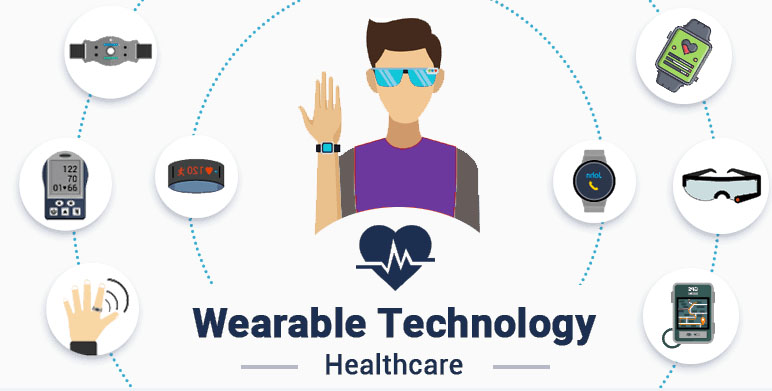Fitbit, Nike, Apple & Jawbone have recently brought to market gadgets which can record expended calories, heart rate & physical activities like steps taken. Just imagine how this technology could likely be used on a larger scale to help people with chronic medical illnesses like Diabetes, emphysema or congestive heart failure. Wearable low-power medical devices promise vastly improving efficiency & cost of end-to-end (E2E) healthcare delivery. This scenario is presently true in developing countries with success in this burgeoning domain benefiting all of humanity.
Challenging Healthcare Infrastructure
Many emerging economies in the world are home to vastly underserved populations. With many cities & rural areas posing numerous challenges to delivery of efficient healthcare generally caused by shortage of requisite infrastructure & specialist healthcare practitioners. These specific use cases not only inspire design of medical devices but also pose challenges to adoption of standards which are critical to affordability of products. Attention is rapidly shifting to possibility of new generation of medical technology with Google Glass creating interest in media. These are not just portable medical devices but wearable as well.
Integrating Social Media in Device Design
Though an expanding area, wearable medical devices like pacemaker have been in use for quite some time. But then to become part of E2E delivery system, they required to be well integrated into clinician’s workflow which is possibly situated at a remote location. Clinicians are therefore are already clamoring for integrating social media applications like WhatsApp based messaging & imaging into these wearable medical devices. Perhaps with help of such integration, patients in rural clinics can start sending lung X-ray to clinicians in urban laboratories through WhatsApp. Both clinicians & patients want easy to use application in design of wearable medical devices at both receiving & sending ends. However, both unequivocally demand that image datas should remain private & secure.
Privacy & Security of Medical Data
It would not just be ideal but also sensible that privacy & security measures must be incorporated in designing wearable medical devices & in equipment receiving resulting data at hospitals, laboratories or clinics. Such effective measures are required to be integrated at chip levels for efficiency. It should be kept in mind that wearable medical devices need to be designed as more than just another consumer electronic device. Even though these two domains overlap & consumer electronic devices like smart phones may also require privacy & security measures, designs for all such products need to be based on function-specific standards.
Role of Standards in Wearable Medical Devices
Global standards for the uninitiated provide basic means to ensure universal acceptability of privacy & security measures. Moreover, global standards also ensure integrity of shared data & interoperability of disparate devices. These standards also usher economies of market growth, scale & cost effectiveness of affordable devices including the kind of healthcare they provide. Affordability, once again remains key to wide-spreading advantages of wearable medical devices throughout the world.
Medical Viability of Wearable Health Devices
Capable of tracking medically important health information, wearable health devices can be deployed in remote monitoring scenarios so as to help detect early stages of medical conditions that are serious in nature. However, most healthcare facilities are not yet equipped or ready to process & pr
otect this useful medical data.
Some Good Examples of Wearable Medical Devices
1. Quell Pain Reliever:
This wearable medical device attaches to upper calf & helps reduce chronic pain for some people. While users can wear this medical device 24X7, Quell provides therapy sessions which last for about an hour each. This device is designed to stimulate nerves in leg with electric current that in turn triggers response from central nervous system which blocks signals anywhere in the body. This kind of therapy is generally known as Transcutaneous Electrical Nerve Stimulation (TENS) & has practically existed for decades. It is also quite effective in reducing certain types of pain.
2. ReliefBand for Morning Sickness
Marketed as treatment for morning sickness or nausea related to motion, ReliefBand is a wrist-worn device which sends electrical pulses so as to stimulate nerve located on underside of wrist. Signals sent out by this device travel to central nervous system so as to block sensation of nausea produced by stomach.
3. Muse Headband
This healthcare device can help users meditate. Meditation is linked with several health benefits like reduced anxiety & stress. Muse Headband also measures brain signals to gauge whether brain is in a ‘calm’ state or otherwise active & wandering. This headband is also designed to translate brain activity into sound so that users can actually hear when mind begins to wander. Muse Headband will subsequently play sounds to guide user’s mind back into a calm state.
Healthcare with HealthYatra
HealthYatra understands need for healthcare including delivery. Associated with top doctors & best accredited hospital facilities in the country, HealthYatra offers a wide spectrum of affordable medical solutions in the country covering specialties like orthopedics, Neurosurgery, cardiology, gynecology, oncology, cosmetic surgery, radiology, Stem Cell Therapy & many more for men & women from all around the world. Services offered by HealthYatra start from the first phone call & include online consultation, warm reception, convenient travel & accommodation, scheduled treatment sessions & surgery, exotic recuperative vacations, follow-up checks & a successful farewell to international patients.
TAGS: Wearable Medical Devices in India, Wearable Medical Devices in India 2024, wearable medical devices companies, wearable devices in healthcare examples, top wearable health devices, wearable medical devices market, wearable medical devices ppt, future of wearable technology in healthcare, wearable devices examples, personal health monitoring devices
For More Information Call on : +91 7387617343 Email : [email protected] Direct Contact on Whatsapp : +91 7387617343
[contact-form-7 id=”536″ title=”Contact form 1″]

